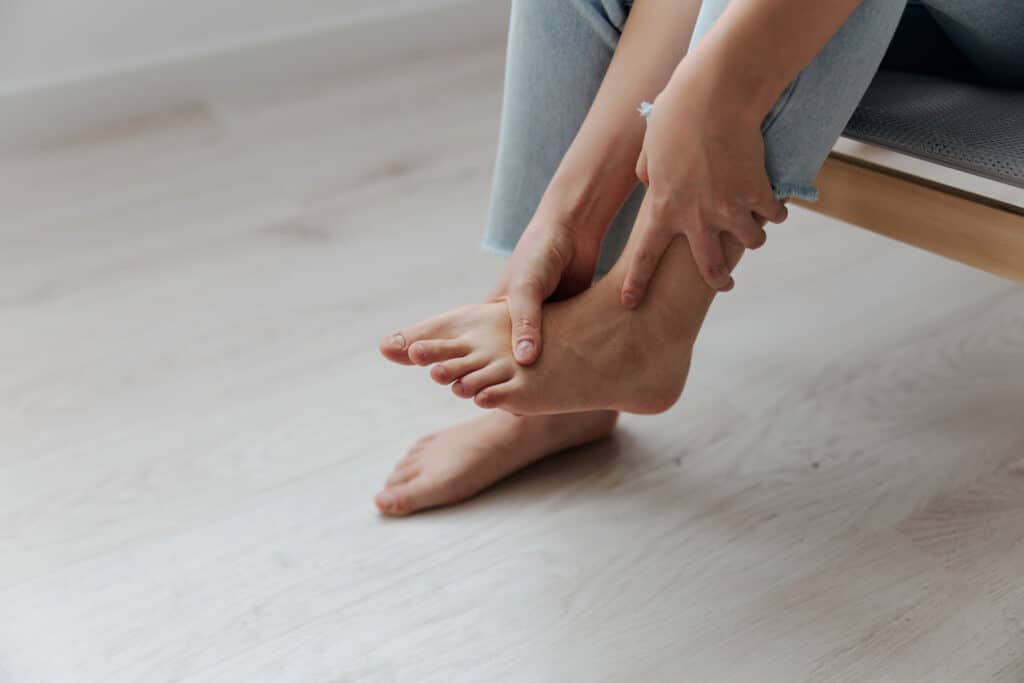
Tibialis posterior tendinopathy can be a serious, debilitating condition and can affect anyone, from athletes to those with sedentary lifestyles. Characterized by pain and inflammation in the tibialis posterior tendon, this condition can significantly impair daily activities and overall quality of life. One question that often arises in the management of tibialis posterior tendinopathy is whether dehydration can exacerbate the condition. This blog post will explore this question in detail and discuss how CARESPACE can help manage and treat tibialis posterior tendinopathy through a multidisciplinary approach involving physiotherapists and chiropractic doctors.
Understanding Tibialis Posterior Tendinopathy
The tibialis posterior tendon plays a crucial role in stabilizing the arch of the foot and facilitating movements such as walking and running. Tendinopathy of tibialis posterior can result from multiple triggers, including overuse, improper footwear, trauma, or biomechanical abnormalities such as flat feet. Symptoms typically include pain along the inside of the foot and ankle, swelling, and difficulty walking.
The Role of Hydration in Tendon Health
Hydration is fundamental to the health of all body tissues, including tendons. Tendons are composed of collagen fibers and extracellular matrix, which contain a significant amount of water. Proper hydration helps maintain the elasticity and strength of these collagen fibers, facilitating better shock absorption and reducing the risk of injury.
How Dehydration Affects Tendons
1. Reduced Elasticity: Dehydration leads to a decrease in the water content of the extracellular matrix, resulting in reduced tendon elasticity. This makes tendons more susceptible to tears and microtraumas.
2. Impaired Nutrient Delivery: Water is essential for transporting nutrients and removing waste products from cells. Dehydration can impede these processes, affecting the overall health and repair mechanisms of tendons.
3. Inflammation: Dehydration can exacerbate inflammatory responses in the body, including within tendons. Chronic inflammation can further damage tendon tissue and delay healing.
Can Dehydration Worsen Tibialis Posterior Tendinopathy?
Given the critical role hydration plays in maintaining tendon health, it stands to reason that dehydration can indeed worsen tibialis posterior tendinopathy. When the body is dehydrated, the tendons are less able to withstand stress, making them more prone to injuries and inflammation. For individuals with existing tibialis posterior tendinopathy, dehydration can lead to increased pain and longer healing times for tibialis posterior tendinopathy
Managing Tibialis Posterior Tendinopathy at CARESPACE
At CARESPACE, we understand that effective treatment of tibialis posterior tendinopathy requires a comprehensive, multidisciplinary approach. Our team of experts, including physiotherapists and chiropractic doctors, work collaboratively to provide holistic care tailored to each client’s unique needs.
Physiotherapy for Tibialis Posterior Tendinopathy
Physiotherapists at CARESPACE play a pivotal role in the management of tibialis posterior tendinopathy through various evidence-based interventions:
1. Exercise: Targeted exercises to strengthen the tibialis posterior muscle and surrounding structures can alleviate pain and improve function. These exercises often include calf raises, foot doming, and resistance band exercises.
2. Manual Treatment: Techniques such as deep tissue treatment and mobilization can reduce pain and improve flexibility in the affected area.
3. Education and Lifestyle Modification: Physiotherapists educate clients on proper footwear, activity modification, and the importance of hydration in maintaining tendon health.
Chiropractic Care for Tibialis Posterior Tendinopathy
Chiropractic doctors at CARESPACE complement physiotherapy with their expertise in musculoskeletal health:
1. Spinal and Extremity Adjustments: Adjustments can help correct biomechanical imbalances that may contribute to tendon stress.
2. Gait Analysis and Orthotics: Chiropractors can assess gait patterns and recommend custom orthotics to provide better arch support and reduce strain on the tibialis posterior tendon.
3. Nutritional Advice: Chiropractors can offer guidance on maintaining optimal hydration levels and a balanced diet to support overall musculoskeletal health.
Integrative Care at CARESPACE
The strength of CARESPACE lies in our integrative approach. Our practitioners collaborate to develop coordinated care plans that address the root causes of tibialis posterior tendinopathy. This multidisciplinary strategy ensures that clients receive comprehensive care that is not only focused on symptom relief but also on long-term recovery and prevention.
1. Personalized Care Plans: Each client receives a tailored treatment plan that may include a combination of physiotherapy, chiropractic adjustments, nutritional advice, and exercise recommendations.
2. Continuous Monitoring: Regular follow-ups and adjustments to the care plan ensure that clients progress effectively and any issues are promptly addressed.
3. Education and Empowerment: Clients are educated about their condition and empowered with the knowledge and tools to manage their health proactively.
Dehydration can indeed worsen tibialis posterior tendinopathy by reducing tendon elasticity, impairing nutrient delivery, and exacerbating inflammation. Proper hydration is essential in the management and prevention of tendon-related issues. At CARESPACE, our team of physiotherapists and chiropractic doctors work together to provide a holistic, evidence-based approach to treating tibialis posterior tendinopathy. By addressing the condition from multiple angles and focusing on long-term health, we help our clients achieve lasting relief and improved quality of life. If you are struggling with tibialis posterior tendinopathy, reach out to CARESPACE today to learn how our integrated care can help you on your journey to recovery.
Explore comprehensive information and professional perspectives in our Tibialis Posterior Tendinopathy Guide.

